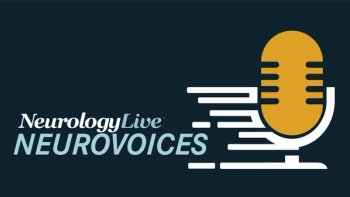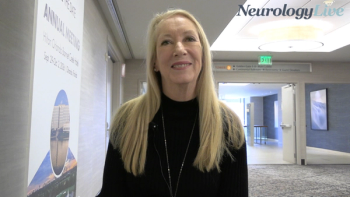
Overview of Narcolepsy
Michael J. Thorpy, MD: Now you mentioned that a common cause of excessive sleepiness is not getting enough sleep at night. But there are other relatively common causes of sleepiness, right?
Russell Rosenberg, PhD, DABSM: Oh, absolutely.
Michael J. Thorpy, MD: Such as obstructive sleep apnea syndrome, narcolepsy. We’re going to focus on narcolepsy today. Kiran, what is narcolepsy?
Kiran Maski, MD, MPH: Narcolepsy is a chronic neurologic condition that causes excessive daytime sleepiness. But it’s more than that. It’s really a problem of sleep-wake stability. Patients, oftentimes, have difficulty staying awake during daytime hours, but at night they also have problems kind of consolidating or maintaining sleep. And most specifically, it’s a disorder of REM [rapid eye movement] sleep. So some of the symptoms, which we’ll go over in a second, relate to that inappropriate REM sleep that comes on during daytime periods or during sleep-wake transitions.
Michael J. Thorpy, MD: And what causes this?
Kiran Maski, MD, MPH: There are 2 subtypes of narcolepsy. There’s type 1, which is narcolepsy with cataplexy, and type 2, which is narcolepsy without cataplexy. Type 1, the subtype with cataplexy, is related to low hypocretin levels. Hypocretin is a neuropeptide in the brain that helps stabilize these sleep and wake states. When it’s gone, there’s sort of this imbalance between sleep and wake, and a fluidity between those states. We think that loss of hypocretin may be related to an autoimmune process because nearly 90% of patients with type 1, if not more, are positive for a specific HLA [human leukocyte antigen] allele, DQB1*0602. We really don’t know what causes type 2.
Michael J. Thorpy, MD: And what may cause this loss of hypocretin and this autoimmune response? Are there any theories?
Kiran Maski, MD, MPH: We don’t have the direct mechanism mapped out, but there is definitely tantalizing evidence. A recent study shows that patients with type 1 tend to have these autoreactive T-cells. So we think this may be a more T-cell—mediated process that recognizes hypocretin peptides. So yes, we’re getting closer to understanding that it may be a disorder of T-cell immunopathology rather than, say, autoantibodies.
Michael J. Thorpy, MD: And it’s been suggested that in many patients, an infective stimulus may set off this process.
Kiran Maski, MD, MPH: Yes, and that’s been observed based on epidemiologic data showing spikes in incidence with cases of streptococcus, the H1N1 flu, and then with the specific H1N1 vaccination called Pandemrix, which was used in European countries.
Michael J. Thorpy, MD: Yeah. That didn’t happen in the United States, I understand. There wasn’t any vaccine-induced narcolepsy in the United States. What about the prevalence? When does narcolepsy generally start, and what is the prevalence of narcolepsy?
Kiran Maski, MD, MPH: Narcolepsy typically starts between the first and second decade of life, in most patients. Even when it’s diagnosed as adult onset, in retrospect, almost 50% of patients report having some symptoms during childhood. So typically 10 to 20 years of age is the peak incidence, and then there’s maybe another peak...20 to 30 years of age. The incidence is not clearly known, but it’s somewhere between 0.3 and 0.5 per 100,000 people. So this is a rare disorder. And in children, it’s not exactly well known, but it may be 0.8 per 100,000. But, of course, there’s the delayed diagnosis problem, where there may have been pediatric onset but it’s not diagnosed until adulthood.
Michael J. Thorpy, MD: Alon, for someone with narcolepsy, how do we begin to tell? What are the main symptoms that patients present with if they have narcolepsy?
Alon Y. Avidan, MD, MPH: So before answering this question, I’d like to just contribute 1 other point to what Dr Rosenberg eloquently described, which is the use of the sleep diary or sleep log. I would urge all clinicians in all practices that—when they see a patient with excessive daytime sleepiness—they provide some measurement of how much sleep and how regular the patient’s sleep-wake patterns are. The sleep log or sleep diary really is the 1 beautiful test that can tell us if the patient is sleep deprived. Do they have irregularities in their sleep-wake patterns? You don’t need a sophisticated watch-like device like the accelerometer, although having it is an advantage. So this is really a bridge between the patient’s symptoms to deciding when the patient should undergo a more sophisticated sleep test.
Michael J. Thorpy, MD: Even if a physician doesn’t have a sleep log available, it’s most important for every physician to understand what that patient’s sleep-wake pattern is. And it’s not just a matter of asking someone what they usually do because most patients are going to tell you, “Well, I go to bed at 11 and I get up at 7 in the morning.” They neglect to tell you that on the weekends, they go to bed at 3 AM and sometimes can be in bed until midday or after, or they may get very short amounts of sleep on the weekends because they’re up so late. So understanding that sleep pattern is important.
Newsletter
Keep your finger on the pulse of neurology—subscribe to NeurologyLive for expert interviews, new data, and breakthrough treatment updates.




































